There are a lot of coots living here in Leiden. Each spring they are busy with nest-making activities. Often we see coot nests in the middle of a canal or pond, sometimes attached to the bottom by an anchor of a discarded bicycle or shopping cart. And the nests are often full of garbage, like plastic bags artfully weaved in between the reeds, or magazine pages stuffed inside the bowl of the nest for padding. You just have to love nature’s recyclers. Last year we captured this video of a coot trying to bring a very large piece of styrofoam to her nest, located inside a waterway post.
Website Spotlight: Save the Albatross
Did you know that 19 of the world’s 21 species of albatross are seriously threatened by longlining, a form of sea fishing? The most at-risk species, the Amsterdam Albatross, has only 17 breeding pairs remaining in the wild.
100,000 albatrosses die each year on fishing hooks, many from longline fishing. Longline fishing fleets set out lines as long as 80 miles. Each line contains thousands of hooks baited with squid and fish, which attract the albatrosses. It is estimated that a third of the albatross deaths are caused by illegal fishing operations.
Save the Albatross is a campaign begun in 2000 by the organzation Bird Life International, in partnership with the Royal Society for the Protection of Birds.
The website of the campaign highlights solutions to the problems caused by longline fishing. It also outlines steps the organization has taken to save albatrosses all around the world. Albatross species and their way of life are also explained in detail. How the campaign is progressing and how readers can help the campaign are also topics.
Federal Funds For Woodpecker Search
“Georgia wildlife biologists are getting federal funding to bushwhack their way into the Okefenokee Swamp in search of the elusive ivory-billed woodpecker, believed extinct until last year.” Read the full story Scientists to seek once presumed-extinct bird in the Macon Telegraph.
Pigeon Brings Down British Helicopter
A Royal Air Force helicopter was forced to land last month in the Scottish Borders after a collision with a bird, believed to be a pigeon. Read the full story Pigeon brings down RAF helicopter on BBC News.
Birds In The Spring Exhibit In Leiden
“Birds in the Spring” is the theme of a new exhibit in the visitor’s center of the Leidse Hout, a forest belonging to Leiden, the Netherlands. The exhibit officially opens today at 4pm during a ceremony conducted by alderman Rogier van der Sande.
The exhibit will focus on birds found in the woods around Leiden, but also on other birds found in city parks and gardens. Via photographs, drawings, audio recordings of bird songs, and models, visitors can learn about the birds and how to identify them.
A special focus will be placed on nests and birdhouses. Habitat for nests is scarce in the Leiden area so residents are encouraged to place birdhouses on their property. Visitors can learn the best places to hang birdhouses and other tips on attracting bird families to the garden.
The exhibit takes place in the Koetshuis visitor center. The center is open Wednesday 1pm to 5pm and Sunday 2pm to 4pm. The center may be open during the week as well; if the flag is hanging outside, the center is open! Entrance is free.
source: Nieuwe tentoonstelling in het Koetshuis in de Leidse Hout
No Homeless Birds!
This week is the Week of the Nestbox in the Netherlands. Bird protection group Vogelbescherming Nederland calls on everyone to hang birdhouses on their property in time for the breeding season, and to take note of nesting activity on their property. The group wants to make gardens and parks more attractive for bird nests while at the same time to get more people interested in birds and their protection.
In the Netherlands today, is fashionable to have a completely paved garden. More often wood fences are used to delineate property, replacing the hedges of yore. These changes have a negative impact on the songbirds that would typically nest in the hedges and search for food on grassy lawns.
Vogelbescherming also sponsors a nest-bird count. Via the website www.weekvandenestkast.nl participants can record the breeding activity in the nests.
source: Alle vogels onder dak
Birding At Starrevaart
Last weekend we visited a small lake between the Hague and Leiden, called Starrevaart. The area is set aside for birds and is a popular spot for both migratory and resident waterfowl and waders.
The Province Zuid-Holland maintains the area, which is 30 hectares water and 30 hectares reeds. The water has a maximum depth of 2 meters.
There is a path around the water, which was quite muddy when we were there on Saturday.
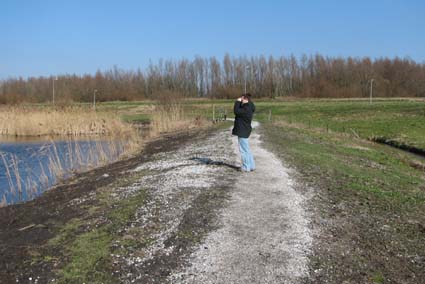
On the walking path
Along the path there are some signs which give details on some of the birds you can find there. This one gives information on the marsh harrier, bruine kiekendief in Dutch.
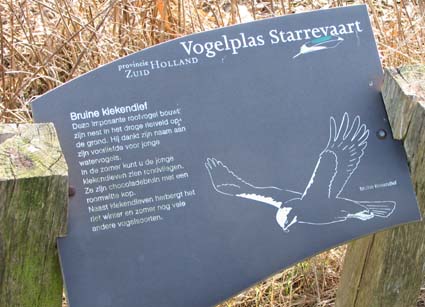
There is a bird hide on the east side of the water.
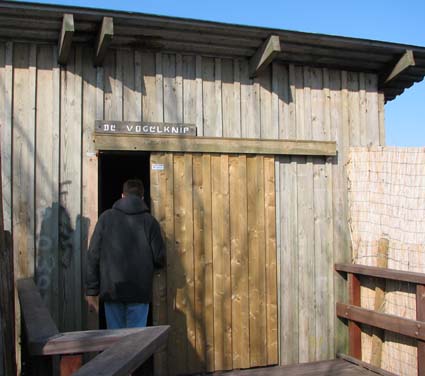
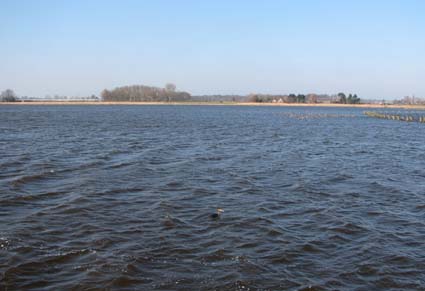
View over the water from the hide
We watched the activity on the water for about 30 minutes. Here are some of the birds we saw.

(Eurasian) Wigeon [Smient] Mareca penelope
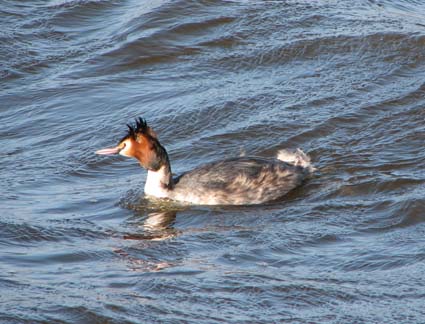
Great Crested Grebe [Fuut] Podiceps cristatus
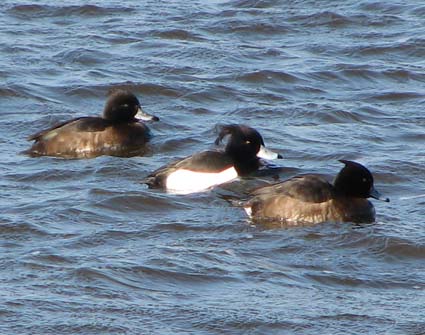
Tufted Duck [Kuifeend] Athya fuligula
To the northeast of the water there is an outlook tower.
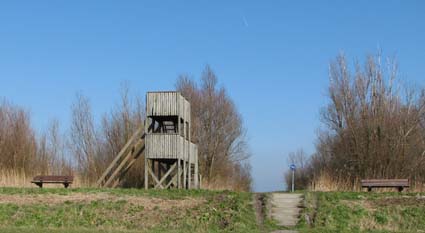
New Bird Island For Netherlands
In the natural area “Wagejot”, by the West Frisian Island Texel, a new bird island has been established. The long island was created with mud silt. The Dutch park service Natuurmonumenten hopes that the island will be used as breeding ground by wading birds.
On Thursday February 24, contractors used heavy equipment to complete the construction of the island with a layer of shells. Natuurmonumenten hopes that bird species such as the common tern, avocet, and the ringed plover will make a home there. The group also hopes the sandwich tern will come to the island. In a nearby natural area a group of sandwich terns has been breeding for the last two years.
Source: NIEUW VOGELEILAND OP TEXEL
Golden Egg Action Tries To Stop Egg Thievery
The Dutch radio program Vroege Vogels (“Early Birds”) announced a competition this weekend which will award the finder of the first Northern Lapwing egg in Friesland this year: The Golden Egg.
It is a tradition in the Dutch province Friesland to steal eggs from the Northern Lapwing. In earlier times the tradition was that the first egg should be brought to the queen. Queen Juliana stopped this practice in 1970, but the tradition to steal the eggs continued.
Since last year, stealing the eggs is illegal under EU regulations. However, some towns in Friesland have applied for and received exceptions to the law. In the month of March citizens may take up to 15 eggs per person. Friesland is the only area in Europe where the practice is allowed. Each year the case between the traditionalists and nature & animal protection groups goes to court.
The action from Vroege Vogels rewards the finder of the first egg – but the egg must remain in the nest. The finder of the egg will be rewarded as long as the parent bird also remains by the nest. The prize is a 14k gold broche. They hope to promote the cause of animal protection by rewarding those who would not steal eggs.
Source: Gouden kievitseitje
18 Dead Pigeons Found In Antwerp
In Antwerp, Belgium on Sunday 18 dead pigeons were found. According to the Belgian agency for the security of the food chain (FAVV), the birds were not infected with the H5N1 virus.
The H5N1 virus does not occur in pigeons. The cause of death has not been determined.
The birds were found under a bridge on the Boomssesteenweg (street). The authorities were informed and the dead birds will be picked up on Monday, according to the Antwerp police.



